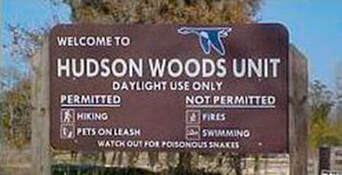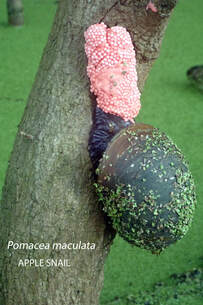Hudson Woods Unit
PUBLIC USE
|
The Hudson Woods Unit of the San Bernard National Wildlife Refuge consists of over 1,000 acres of old growth forest, an oxbow lake, willow swamps, and partially cleared land which will be restored to wetland forest. As the years pass there are changes to the forest ecosystem. Through a natural process called ecological succession, new plants and trees come to life while others die. MAP
|
HIKES AND WALKS
Scoby Lake Trail circles a natural oxbow lake and is almost two miles long, allowing visitors to enjoy the natural beauty of an old bottomland forest. The trail is accessible for hiking, photography, and wildlife observation. As you hike the trail, listen and you may hear the drilling of a woodpecker, the sound of a squirrel cracking a nut, or the songs of a variety of birds, some of which live here all year, and some which migrate through on their journey between the tropics and northern regions. Bottomland hardwood forests such as this are rich habitats known for high wildlife diversity and productivity. These forests have been identified as especially important for migrant birds. As you explore the ecosystem of Hudson Woods, notice the many forest layers and the interactions between plants and wildlife, each important to sustaining a healthy environment.
Please stay on the trail for safety and be mindful of possible encounters with venomous snakes. Remember, on the Refuge all life is protected, even snakes. Please take nothing but pictures, and leave nothing but footprints. Scoby Lake Trail Map
Please stay on the trail for safety and be mindful of possible encounters with venomous snakes. Remember, on the Refuge all life is protected, even snakes. Please take nothing but pictures, and leave nothing but footprints. Scoby Lake Trail Map
|
|
MAPS & OTHER RESOURCES
|



